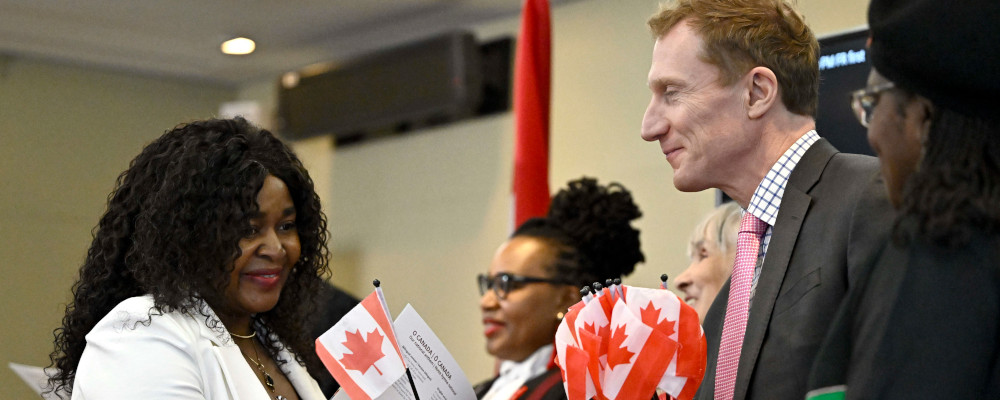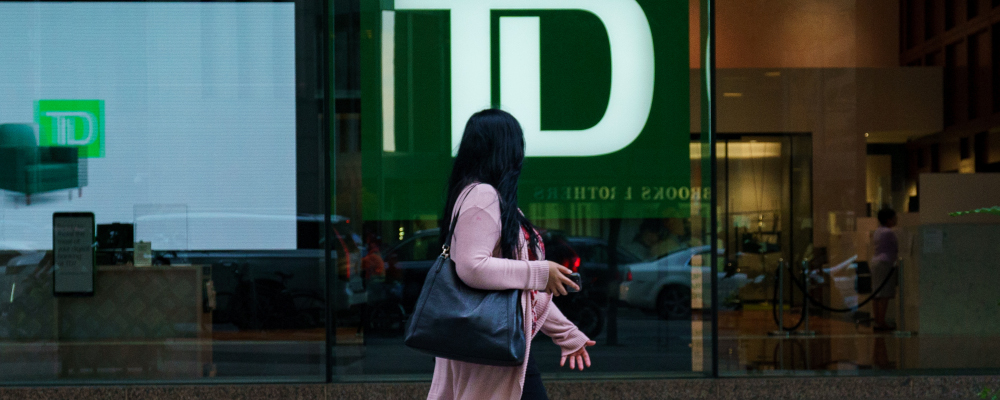In The Weekly Wrap Sean Speer, our editor-at-large, analyses exclusively for Hub subscribers the big stories shaping politics, policy, and the economy in the week that was.
School lunches are not the prime minister’s responsibility
The week was marked by a series of pre-budget announcements by Prime Minister Justin Trudeau designed to shore up the government’s weak political standing on affordability issues.
One of the most widely debated announcements was that this month’s budget will earmark $1 billion over five years for a new national school food program. The program will apparently benefit roughly 400,000 students daily.
That’s about all we know about it at this point. The government’s press release (which reads like a party press release issued in an election campaign) doesn’t say much more.

There are major outstanding questions about its implementation. The biggest challenge is obvious: the federal government doesn’t run schools. Provincial governments and local school boards do. It means that a national school food program can only happen if Ottawa uses the federal spending power to compel the provinces to establish such a program on its behalf.
Even for a government that’s been prepared to use the federal spending power more than virtually any other in Canadian history, this proposal seems like a stretch. In most other instances where the federal government intrudes into provincial or local jurisdiction, one can plausibly connect it to a federal power. You may want national standards for health care to enable mobility rights. You might have the federal government support certain types of public infrastructure projects to the extent that they support the national economic union.
A national school food program is so far removed from the federal heads of power—so deeply entrenched in provincial and local responsibilities—that Ottawa isn’t even bothering to try to argue that it contributes to the advancement of a national power. This is a straight-up case of buying its way around the constitution for the Trudeau government’s own ideological and political reasons.
The government’s proponents have dismissed such concerns about the division of powers as abstract constitutional niceties that have limited standing in the world of realpolitik. We’ve instead heard such arguments as “Feed the kids” or “Feed hungry kids!”
The whole episode is a sign that the Trudeau government in particular and the political Left in general have fully given up on federal responsibilities. Their attraction to national politics is less about federal powers and more about the nationalizing capacity inherent in an unconstrained federal spending power. They view “provincial patchworks” as a problem to solve rather than a natural expression of the constitution’s division of powers. And they’re prepared to solve it by writing (deficit-financed) cheques.
It raises broader questions about contemporary conceptions of the role of government and politics itself. In the face of a possible public issue, our first instinct is not only that the state must solve it but that the responsibility ultimately lies with the highest order of government.
Why is that? How did it happen? Why isn’t the subject of school food programs the purview of local school boards or parents and teachers at individual schools? And if we can nationalize a school food program, what, if any, constraints are there on the use of the federal spending power? Do the divisions of powers still matter? Or are they ultimately up for negotiation for the right price?
The government is ostensibly betting that most Canadians don’t care about these archaic issues. It’s probably a good bet. But that doesn’t mean that the rest of us shouldn’t care. Our system of federalism shouldn’t be susceptible to the whims of left-wing preferences unmoored from the constitution. Principle should matter for something. If the prime minister wants to run school food programs, he should volunteer at a local Ottawa school.

Justin Trudeau critiques Justin Trudeau’s immigration policies
The strangest story this week was Prime Minister Justin Trudeau’s acknowledgement that his government has overseen an uncontrolled increase of temporary immigration into the country “far beyond what Canada has been able to absorb.”
It’s an extraordinary admission for various reasons including the seeming detachment from his government’s ultimate responsibility for the massive spike in non-permanent residents. His comments sounded like those of an incoming prime minister condemning the policy failures of his or her predecessor.
Yet these developments are neither inadvertent nor the fault of a past government. A combination of the Trudeau government’s untightening of its predecessor’s 2014 reforms to the Temporary Foreign Worker program and its own expansion of the international student visas are what’s ultimately behind the 93 percent increase in non-permanent residents since 2021 alone.
Another way to put it is: Canada’s population grew faster in 2023 than any year since 1957 and of that year-over-year growth, 63 percent came from non-permanent residents. It was the second consecutive year in which temporary immigration has driven the country’s population growth. These are unprecedented numbers.
Their demand-side implications for housing and shelter and other basic infrastructure had up until recently gone essentially unrecognized by the Trudeau government. It has now only recently started to shift its messaging and policies in light of growing public concerns and plummeting poll numbers.
Immigration Minister Marc Miller has described the spike in temporary resident permits as a “byproduct of a lack of integrity in the system.” He recently announced plans to cut them in order to restore a more “sustainable level.” Prime Minister Trudeau’s uncharacteristically pointed comments this week must be understood in this evolving political context in which his government is effectively running against itself.
There’s a strong case however that the prime minister shouldn’t have been surprised by the rise of temporary immigration or its negative effects. He actually forewarned about them as the then-third-party leader in a prescient Toronto Star op-ed ten years ago next month.
Trudeau called the (relatively moderate) growth of temporary residents under the Harper government a case of “mismanagement” that represented “serious damage” to the public’s ongoing support for high levels of permanent immigration.
In particular, he warned that temporary immigration depresses wages and displaces Canadian workers. He effectively argued for eliminating the Temporary Foreign Workers program altogether (“I believe it is wrong for Canada to follow the path of countries who exploit large number of guest workers”) and instead putting a priority on permanent immigrants who have a path to citizenship. He argued that this approach was rooted in the principle of fairness for Canadians who need work and temporary immigrants themselves.
It seems somewhat unfair to hold his near-decade-old arguments against him today. Opposition politicians understandably tend to get a bit of leeway for such policy adjustments. A lot has also happened in the intervening time.
But the difference here is that the prime minister knew what would happen if we continued to steadily increase temporary immigrants. We know because he persuasively wrote about it. Trudeau anticipated the political economy risks and yet upon getting elected he opted to do nothing about it—or more precisely rather than “dramatically scale back” the country’s temporary resident population, he inexplicably chose to dramatically scale it up.
If the Trudeau government loses the next federal election, which at the moment seems quite likely, it may be in large part because when it came to temporary immigration, the prime minister failed to heed his own well-considered advice.

The case for a lost economic decade grows stronger
This week The Hub’s chief economics commentator Trevor Tombe (who I’d argue is the best in the country) brought new data and thinking to bear on the ongoing debate about Canada’s “lost decade.”
Thus far the discussion has been primarily focused on the country’s flat business investment, stagnant productivity, and declining GDP per capita. The evidence from these economic metrics is pretty overwhelming. Canada’s overall economy is heading in the wrong direction.
Yet there’s a reason why politicians have typically been discouraged from talking about productivity. It sounds cold and technocratic. It can be misconstrued with working harder or involving job layoffs. It’s not instinctively clear how it translates into higher wages or living standards for ordinary Canadians.
GDP per capita similarly has its own challenges. While its critics overstate its limitations, it is true of course that it doesn’t account for distributional considerations or other socio-economic dynamics. It has tremendous utility as a directional tool—it enables us to see trends in our society’s overall wealth and how it compares to peers—but it doesn’t quite tell us how ordinary citizens or individual households are faring.
Herein lies Tombe’s great contribution to the policy conversation. He drills down into income trends over the past decade or so since 2015. If Canada’s economy is experiencing a “lost decade,” this is where it would manifest itself for most Canadians.
What does he find? The numbers are pretty bad. He estimates that real disposable incomes have grown by a mere 0.2 percent annually since 2015.
No wonder people are feeling squeezed. Their disposable incomes have grown much slower than the prices of various household goods including of course shelter itself. Their perceptions of precarity in other words aren’t confused or wrong. Many are actually falling behind in terms of the relationship between their incomes and basic expenses.
This slow rate of income growth, by the way, is historically rare. Over the past 100 years, there have only been two other cases when worse income growth than we’re seeing now: the Great Depression and the 1990s recession.
When we introduced the idea of a “lost decade” in an essay last month, we were somewhat self-conscious about whether the evidence was strong enough or if the notion itself was overstated. Tombe’s helpful contribution to the public debate confirms that such apprhension was unwarranted. The depth and scale of the lost decade are arguably worse than we understood. As Tombe concludes, policymakers must focus on ensuring that it doesn’t become two lost decades.




